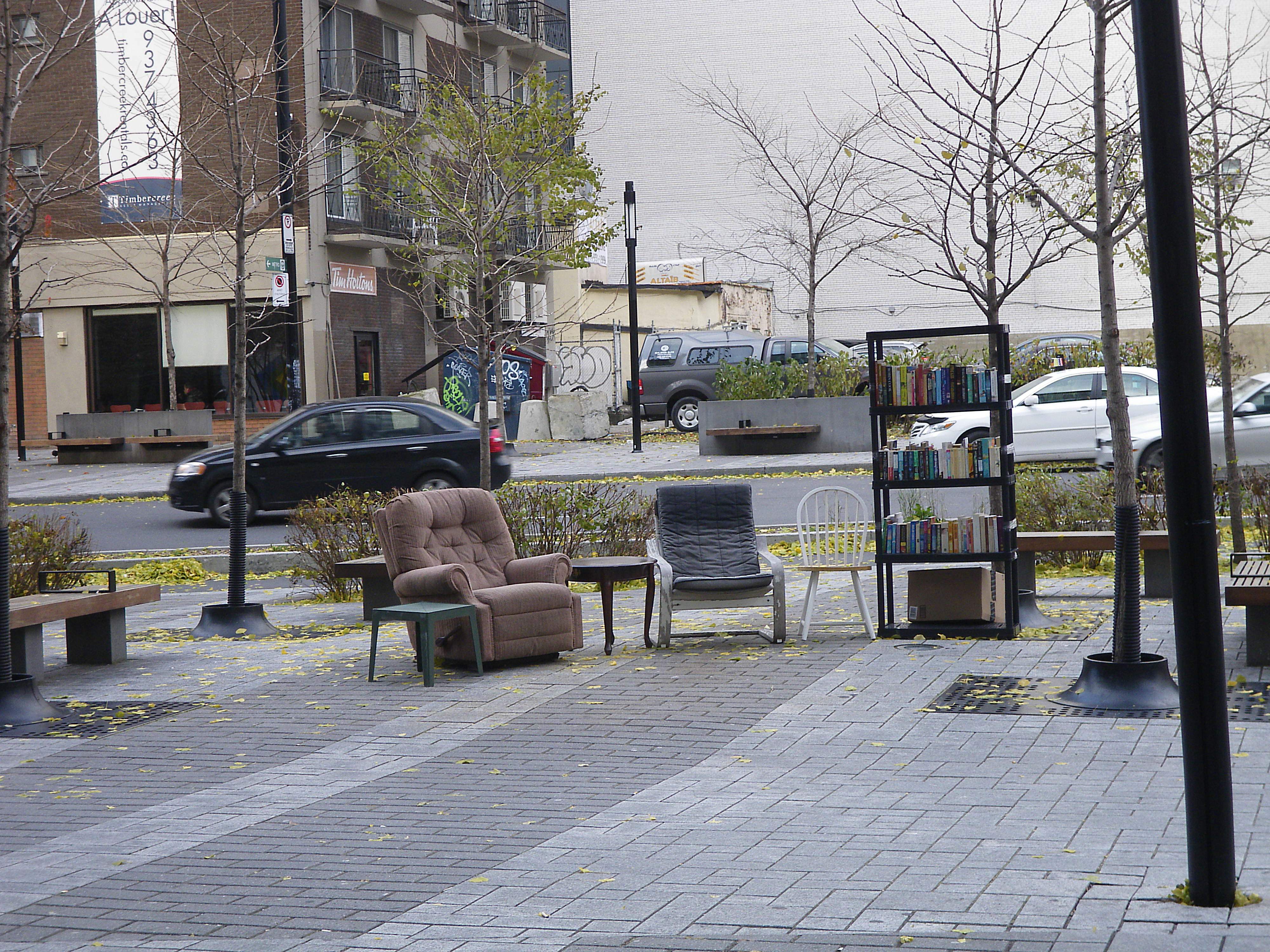How Danse Danse brought the performance to you
The Place des Arts Esplanade became an exploration space this weekend for performers in the dance creation titled Habiter nos mémoires by Caroline Laurin-Beaucage. The performance was part of Danse Danse’s outdoor program called Hors les murs kicked-off their fall season. On Friday and Sunday — Saturday had to be cancelled because of the rain — each of the eight performers spent an hour in an open cube that had been set up for them in the public space. The performances lasted from 11 a.m. to 7 p.m. for passersby to watch.
This performance followed Laurin-Beaucage’s solo piece that was initially titled Habiter sa mémoire. The artist’s idea was to bring the rehearsal space closer to the audience. Laurin-Beaucage said that her goal for this project was, “to bring my dance studio outside, to give me a new challenge and to explore what it means to work outside while generating an authentic dance.”
For Habiter nos mémoires, the artist shared her process with eight women aged between 25 and 60. Carol Prieur, Brianna Lombardo, Angélique Willkie, Ariane Levasseur, Susanna Haight, Marie-Reine Kabasha, Claudine Hébert and Marine Rixhon wore red clothing and started each moment in the cube by recording their voice. The improvisation that followed aims for the dancers to connect to the way their bodily sensations inspired them to move in that moment. Each hour was concluded by recorded personal messages recalling what happened during the last hour.
Sound creator Larsen Lupin created a soundscape for the performances putting together the artists’ voice recordings. Visitors were able to access the soundtrack while watching. For Laurin-Beaucage, this was an important part of the presentation. She discovered that “the way we speak seems to fit the rhythm of our dance and it actually works, the soundtrack of our voice really accompanies our movements.”
Laurin-Beaucage’s process in the initial version of the project also included the same open cube and voice recordings. Laurin-Beaucage admitted that there is a kind of vulnerability that comes with presenting non-prepared movement propositions in front of an audience. She explored that vulnerability a lot as she presented the improvised outdoor exploration 32 times in the last five years in different locations and countries. Each event lasted approximately four hours, like a typical dance rehearsal would. She transmitted the knowledge she had gained in that process to the eight performers of Habiter nos mémoires when they were preparing for the event.
Habiter nos mémoires is one of the three dance pieces that are being presented by Danse Danse in the public space this fall. For Danse Danse’s artistic co-director and director of development Caroline Ohrt, the Hors les murs programming “gives audience members the freedom to wander […], it grasps the attention of people who do not necessarily come in the theatre.” The dance diffuser hoped to present an outdoor program last year, but the COVID-19 restrictions changed their plans.
Hors les murs started on Sept. 24,, with choreographer Sébastien Provencher’s piece Children of Chemistry presented in the windows of the 2-22 building on St-Catherine Street. Habiter nos mémoires followed on Oct. 1 and 3, alongside Sylvain Émard’s work Préludes, which was presented in the afternoon of Oct. 3. Émard’s outdoor presentation preceded his new show Rhapsodie, which is coming up in February 2022.
For more information on all of the pieces, please visit Danse Danse’s website.
Photo courtesy of Thomas Payette
